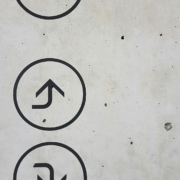Mastering Persuasion: Leading Buyers To Your Solution
Persuading a potential client to embrace your product or service and adopt a fundamental shift in their business approach presents a formidable challenge. Nevertheless, such persuasion is often a necessary step forward. In my experience, the most effective approach to move a prospect from reluctance to considering change is by showcasing value.
I liken it to mastering the three M’s – measurement, the mechanism by which value is measured, and the meaning (dollars) of the measurement. Without perceived tangible benefits or a compelling rationale for change, buyers will likely remain steadfast in their decision to decline.
Here’s a breakdown of the three M’s. Mastery of each will set you on the path to effective persuasion.
- Measurement: Understanding how the buyer calculates value is paramount. By asking pertinent questions, you can identify the metrics that hold the greatest significance for the buyer. For instance, in the medical device industry, value is measured in recovery times and reimbursements. In the hospitality industry, attention is often directed towards guest satisfaction ratings and occupancy rates, whereas in retail, metrics like sales per square foot and inventory turnover take precedence. Metrics reflect costs, which your product has the potential to alleviate. To what extent can your product help decrease expenses? This process establishes worth by yielding tangible monetary benefits, with dollar savings serving as a significant indicator of value.
- Mechanism: How do you calculate the value? In the medical device industry, it may be patient outcomes per procedure or cost savings per treatment, while in the hospitality industry, it could revolve around room occupancy rates. Does your client have a system? If not, work together to establish one. Achieving alignment on how value is quantified is crucial for an effective approach.
- Meaning: How do you evaluate the data generated or collaboratively developed in step two? These figures should undergo analysis to enhance profitability It’s imperative to analyze these figures to optimize profitability. For example, if a medical device company introduces a new procedure that shortens the duration of a specific surgery by 10 minutes, resulting in reduced anesthesia usage and shorter recovery times, the potential cost savings could be substantial. By quantifying this, it’s projected that the hospital could save $500 per surgery, translating to $60,000 in annual savings for each operating room. Such information alone carries immense importance for the buyer.
Once the value is established, resistance to change diminishes. If the buyer remains skeptical, revisit step one to strengthen the connection between key metrics and value. Flannery Sale Systems can assist you in steering discussions with buyers to integrate value. When applied effectively, these tools will help buyers transition from traditional practices to your innovative approaches more seamlessly.



